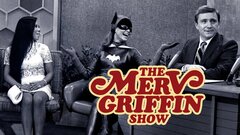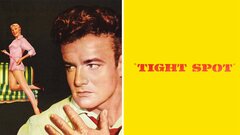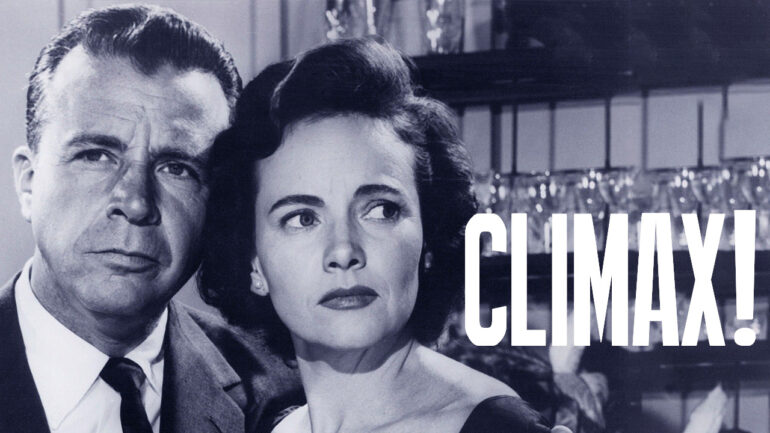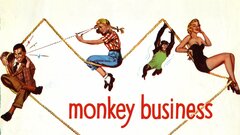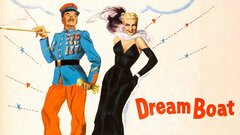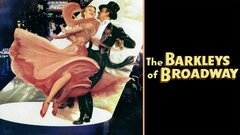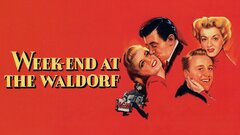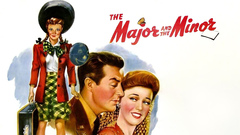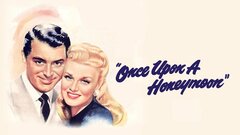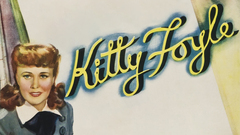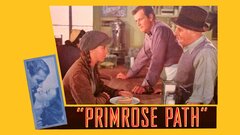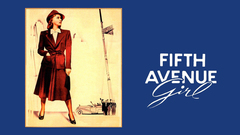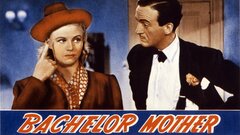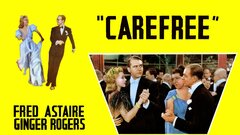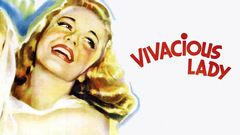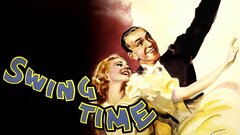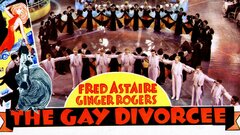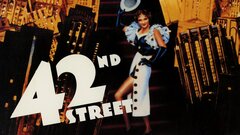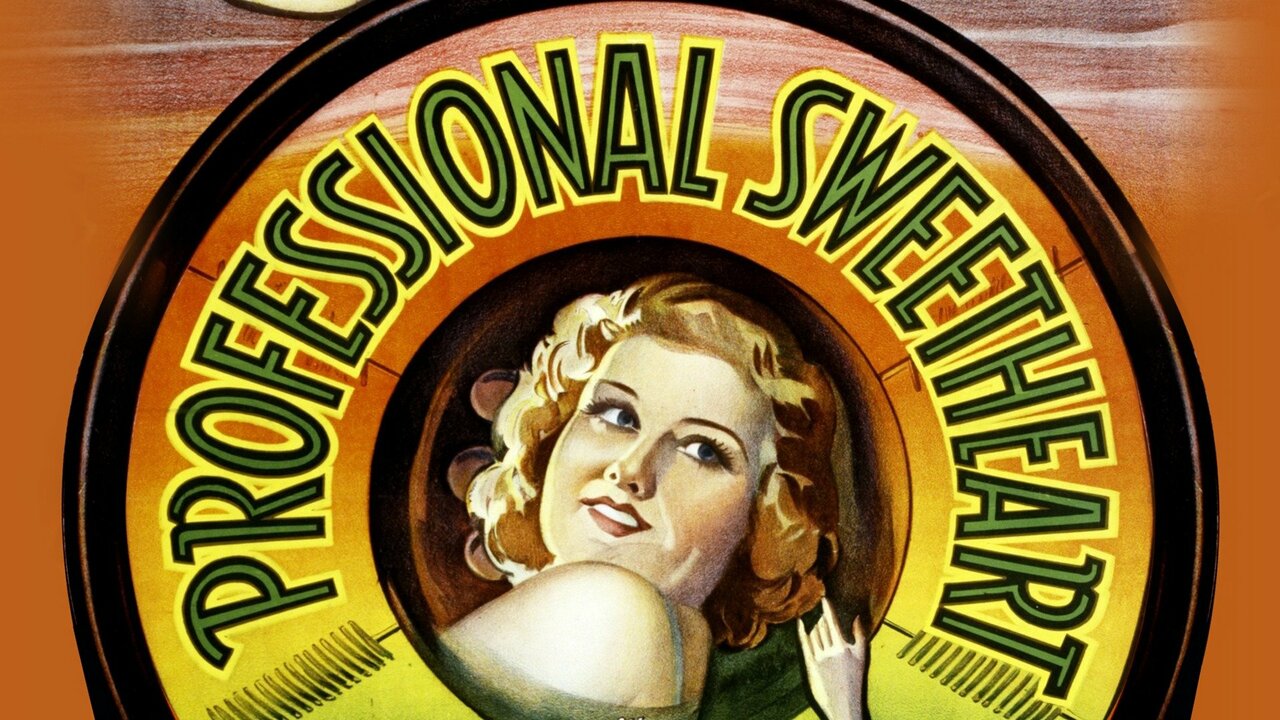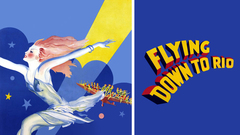As the saying went about Ginger Rogers, she could do everything that her famous dance partner, Fred Astaire, could do, but she did it backwards and in high heels. That declaration neatly summed up the career of the Oscar-winning actress, which was marked by her seemingly limitless talents, which included starring in 10 sparkling screen musicals with Astaire, as well as subtle comedies like "Stage Door" (1937) and "The Major and the Minor" (1942), as well as heartfelt dramas like "Kitty Foyle" (1940).
Rogers had achieved stardom on Broadway before she was 20, and began making feature films shortly thereafter, but it was her collaborations with Astaire that elevated her from movie star to screen icon. Their dance routines were the epitome of class and grace, as well as possessing a chaste sexiness that transcended the censorial limitations of the period. Astaire himself would credit her as one of his best screen partners, but their films together were just the start of her long and storied career.
A decade's worth of solo features followed her musical heyday, culminating with her Oscar triumph as a headstrong girl determined to find happiness in "Kitty Foyle." Though her movie career declined in the early 1950s, Rogers remained a star on Broadway and nightclubs for another two decades, as well as a welcome figure on television, where she regaled audiences with stories of her past work. Rogers' star never truly dimmed, both in her lifetime and after it, and her screen presence, whether in the arms of Astaire or on her own, remained one of Hollywood's greatest treasures.
She was born Virginia Katherine McMath on July 16, 1911 in Independence, MO, the only child of electrical engineer William Eddins McMath and his wife Lela Emogene Owens, a screenwriter and reporter. From an early age, she was referred to as "Ginja," which came from a young cousin who was unable to pronounce "Virginia." Rogers' parents split shortly after she was born, which resulted in an acrimonious custody battle. During this time, Lela Owens was working in Hollywood, so Rogers spent part of her childhood at her grandparents' home in Kansas City. Later, her mother married John Logan Rogers and moved with her daughter to Fort Worth, TX to work as a theater critic. Although never formally adopted by Rogers, Ginger took his surname as her own.
The bubbly child was interested in dance from an early age, performing frequently at local charity shows and school productions, but her passion truly blossomed when her mother brought her along to various stage productions. There, Rogers reportedly danced and sang along with the performers. At 14, she won the Texas State Charleston Competition, which earned her a four-week tour of Texas cities on the Interstate Theatre Circuit. With two redheaded Charleston dancers as her accompaniment, the act, billed as "Ginger and the Redheads," drew such crowds at each stop that the tour was extended to a six-month jaunt through the Western states. Rogers briefly developed a vaudeville act with her first husband, Jack Culpepper, who performed a singing and comedy act under the name of Jack Pepper. Their partnership, billed as "Ginger and Pepper," had an even shorter lifespan than their marriage, which lasted from 1929 until they parted amicably in 1931.
Rogers soon established herself as a solo act with lengthy runs in Chicago and St. Louis. Rogers also sang with Chicago bandleader Paul Ash's orchestra, and traveled with them to New York City to perform at the Paramount Theatre on Broadway in 1929. There, she landed her first stage role as the ingénue in the musical "Top Speed," which earned her critical raves as well as the attention of Paramount Pictures, which signed her to a seven-year contract. In 1930, the 19-year-old Rogers made her feature film debut as a saucy flapper in "Young Man of Manhattan," a breezy show business comedy starring Claudette Colbert and Charles Ruggles. As Puff Randolph, Rogers uttered the immortal line "Cigarette me, big boy," which soon became a national catch phrase. That same year, Rogers earned her first starring role on Broadway in "Girl Crazy." Top billed with another up-and-coming actress-singer, Ethel Merman, the show made Rogers a star, and minted two of her numbers - "Embraceable You" and "But Not For Me" - as instant classics.
At the end of her Broadway run, she dove into motion pictures, making four pictures in 1930 alone. None were particularly memorable, with Rogers usually playing dizzy blondes, and she soon freed herself of her Paramount contract before lighting out for Hollywood with her mother. Once there, she worked for a variety of studios in unremarkable pictures until 1933's "42nd Street" for Warner Bros. Cast as chorus girl Ann "Anytime Annie" Lowell, she established her screen persona as a brassy, worldly-wise girl who dove into songs and dance numbers with boundless enthusiasm. In 1933, she starred in "Gold Diggers of 1933," an opulent musical with choreography by Busby Berkeley, who showcased her in a jaw-dropping rendition of "We're In the Money," which featured the barely clad showgirl dancing before colossal coins while Rogers delivered part of the number in pig Latin.
Rogers was also adept at light comedy, as evidenced by her fast-talking turn as a reporter opposite her second husband, actor Lew Ayres, in "A Shriek in the Night" (1933). But musicals remained her most prominent showcase during this period, and in 1934, she signed with RKO to make "Flying Down to Rio," a romantic comedy with Gene Raymond as a bandleader who falls for a flirtatious Brazilian girl (Dolores Del Rio) while performing in Miami. Billed fourth and fifth in the credits were Rogers as Honey Hale, the band's singer, and Fred Astaire as Fred Ayres, Raymond's assistant. Their first dance together was "Carioca," a ballroom number in which they perform with their foreheads touching. The chemistry between the pair was immediately palpable to viewers, many of whom felt that they stole the picture away from the leads. Astaire and Rogers were soon minted as a screen dance team, and earned their first starring roles in "The Gay Divorcee" (1934), which featured a 20-minute routine to "The Continental" at its conclusion.
Astaire was a notorious perfectionist who often drove stage and screen partners to distraction with his endless rehearsals. But Rogers proved to be not only his most enduring co-star, but also his most durable. She had never performed with a dance partner prior to "Flying Down to Rio," and though an accomplished dancer, lacked certain skills like tap, that would be essential elements of their subsequent collaborations. But she did possess two attributes that helped her overcome these obstacles: she was doggedly determined to succeed, a gift from her ambitious mother that helped her to master difficult steps and routines. And she was a talented actress who was able to convey romance, grace and poise through physical presence and facial expression. The end result was a combination of movement and performance that elevated Rogers and Astaire's 33 paired routines to the vanguard of style in Hollywood dance and provide the ultimate escapism for audiences suffering through the Great Depression.
Keeping RKO studios afloat throughout the 1930s, Astaire and Rogers made 10 films together, beginning with 1933's "Flying Down to Rio" and concluding 16 years later with "The Barkleys of Broadway" (1949), in which Rogers stepped in for an ailing Judy Garland. Critics and fans found their respective favorites among the pictures, though the most financially successful was unquestionably "Top Hat" (1935), a lively screwball comedy with Astaire as an American tap dancer who attempts to woo a reluctant Rogers. The film featured one of their most memorable numbers, "Cheek to Cheek," in which Astaire wins over the headstrong Rogers through a complex, dreamlike routine that suggested verbal sparring before she succumbed to his charm with her signature deep backbend. The couple would enjoy similar moments of brilliance in subsequent films, like the syncopated "Waltz in Swing Time" from "Swing Time" (1936) which simultaneously expanded the boundaries of screen elegance while poking gentle fun at it, and a lovely foxtrot to "They Can't Take That Away from Me" in "Shall We Dance" (1937), among many other scenes indelibly etched in the minds of musical fans around the world. Despite the acclaim Rogers enjoyed from these films, she was treated as one of the supporting cast by RKO, and in fact, was paid less than many of them. Her mother, Lela Rogers, proved to be her ace in the hole in terms of fostering both financial and artistic respect from the studio. Rogers had been a tough but caring stage mother since her daughter's debut in the 1920s, and personally oversaw the shooting of many of her films to make sure her daughter was regarded as a star.
Shall We Dance" marked the apex of the Astaire-Rogers collaborations, as well as the final days of the Depression Era musical. Skyrocketing production costs in the face of a national debt made studio chiefs turn to dramas and comedies for their box office take, and the pair would make just two more films, 1938's "Carefree" and "The Story of Vernon and Irene Castle" (1939). The latter, a biopic of the popular World War I dance team, was considered a failure because of its downbeat ending in which Astaire, as Vernon Castle, dies during military service, but in truth, it was the genre that had collapsed, not the duo's screen popularity. During this period, Rogers had worked tirelessly to maintain her identity as a performer outside of her partnership with Astaire through brassy comedies and emotional dramas. Her naturally brassy persona shone through in the former in pictures like the Broadway showgirls slice-of-life "Stage Door" (1937) and "Roxie Hart" (1942), a highly sanitized biopic of the showgirl whose scandalous murder case was also the subject of the musical "Chicago." But she also excelled at "women's pictures" like "I'll Be Seeing You" (1944), a handkerchief-heavy romance between a shell-shocked soldier (Joseph Cotton) and a convict (Rogers) on furlough.
Rogers' solo career hit its high point with 1940's "Kitty Foyle," a sudsy drama penned by Dalton Trumbo about a working-class girl who falls in love with a wealthy but spineless publisher (Dennis Morgan). She earned the Best Actress Oscar for her performance, and for a time, she was the highest paid and most in-demand actress in Hollywood. Having severed ties with RKO, she moved freely among the studios, cherry-picking quality projects like Billy Wilder's comedy "The Major and the Minor" (1942), with Rogers masquerading as a 12-year-old girl in order to avoid paying a full train fare, and "Lady in the Dark" (1944), an adaptation of the Kurt Weill/Ira Gershwin musical about a woman publisher (Rogers) undergoing psychoanalysis. Rogers was even the hero of Ginger Rogers and the Riddle of the Scarlet Cloak, a girls' adventure novel in the vein of the "Nancy Drew" series penned by her mother. The success of her films and other projects allowed her to purchase a 1,000-acre ranch in Southern Oregon, where she lived with her mother and built a dairy complex that supplied milk to Camp White, a nearby military cantonment, throughout World War II. In 1969, she sold her home in Beverly Hills to live in Oregon permanently until 1990.
Rogers married her third husband, Marine Jack Briggs in 1943, but the marriage ended in 1949, which also marked the decline of her status as a leading lady. Her films had drifted into weak melodrama territory, and with the exception of "The Barkleys of Broadway" (1949), a charming musical which reunited her with Astaire, and "Monkey Business" (1952), a cute screwball comedy by Howard Hawks that co-starred Cary Grant and a little-known Marilyn Monroe, her output saw few successes. She co-starred with Clint Eastwood in "The First Traveling Saleslady" (1956), one of the last productions by her old employer, RKO Pictures, and flitted between features and television until 1965, when she made her final film appearance as Jean Harlow's mother in the wan biopic "Harlow."
Rogers maintained a reduced profile in the 1950s and early 1960s; she had married actor Jacques Bergerac, a Frenchman 16 years her junior, in 1953, but the union only lasted four years. In 1961, she married bandleader-turned-actor William Marshall, who produced one of her final movies, a lackluster adventure called "The Confession" (1964) with Ray Milland. Marshall's issues with alcohol forced a separation, but the couple did not formally divorce until 1969. Rogers bounced back the following year in the Broadway production of "Hello, Dolly!" The musical, which had starred Carol Channing, had been performing poorly at the box office, but ticket sales soared when she took over as Dolly Levi for an 18-month run. Four years later, she scored a second stage success with "Mame" in London, which ran for 14 months and included a Royal Command Performance for Queen Elizabeth II.
Despite the end of her screen career, Rogers' popularity never diminished with moviegoers, who eagerly followed her numerous appearances on talk and variety shows throughout the 1960s and 1970s. She also remained on friendly terms with Astaire, whom she presented a special Academy Award in 1950; when the duo broke out into an improvised dance during an appearance at the 1967 awards, they received a standing ovation from the audience. Rogers kept herself in the public eye as a spokesperson for JC Penney, and even designed a line of lingerie for them. She later launched a successful nightclub tour that took her around the world. Rogers also expressed an interest in women's rights, as noted by a speech at the Congressional Women's Luncheon in 1973, which was later read into the Congressional Record.
In 1986, Rogers fulfilled a lifelong ambition to direct when she oversaw an off-Broadway production of "Babes in Arms" in Tarrytown, New York. She made her final screen appearance in a 1987 episode of "Hotel" (ABC, 1983-88) before publishing her autobiography, Ginger: My Story, in 1991. Rogers then settled into a series of well-deserved accolades from her peers. Chief among these was the Kennedy Center Honors, which paid tribute to her in 1992. The event was somewhat overshadowed by Astaire's widow, Robyn Smith, who refused to allow film clips of her husband with Rogers to be shown during the subsequent CBS broadcast. Rogers' final public appearance came in March of 1995, when she received the Women's International Center Living Legend award. A month later, on April 25, 1995, Rogers died of congestive heart failure at the age of 83 while at her winter home in Rancho Mirage, CA. She was interred at the Oakwood Memorial Park in Chatsworth, CA in a plot next to her mother, and only a short distance away from the grave of Fred Astaire.






